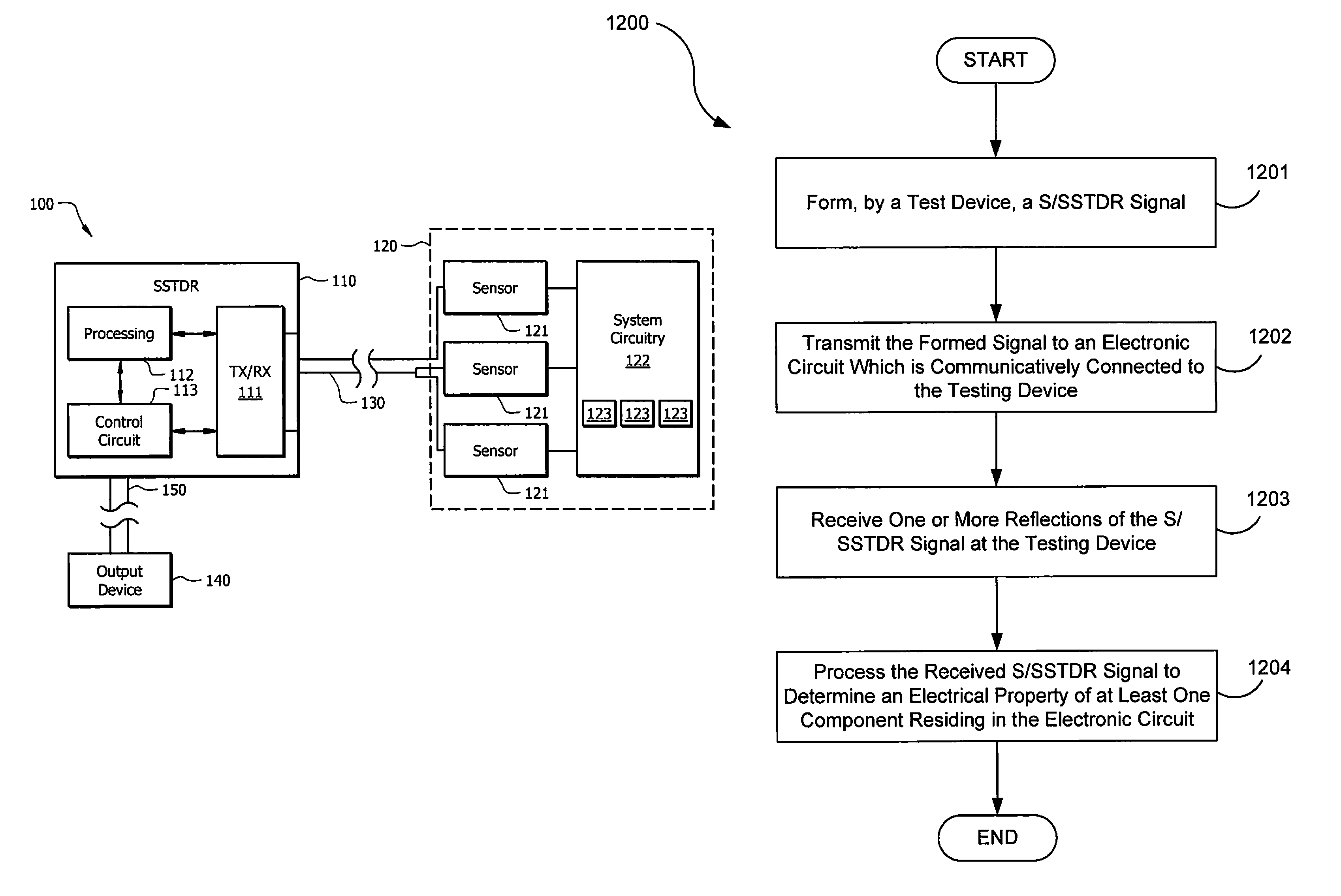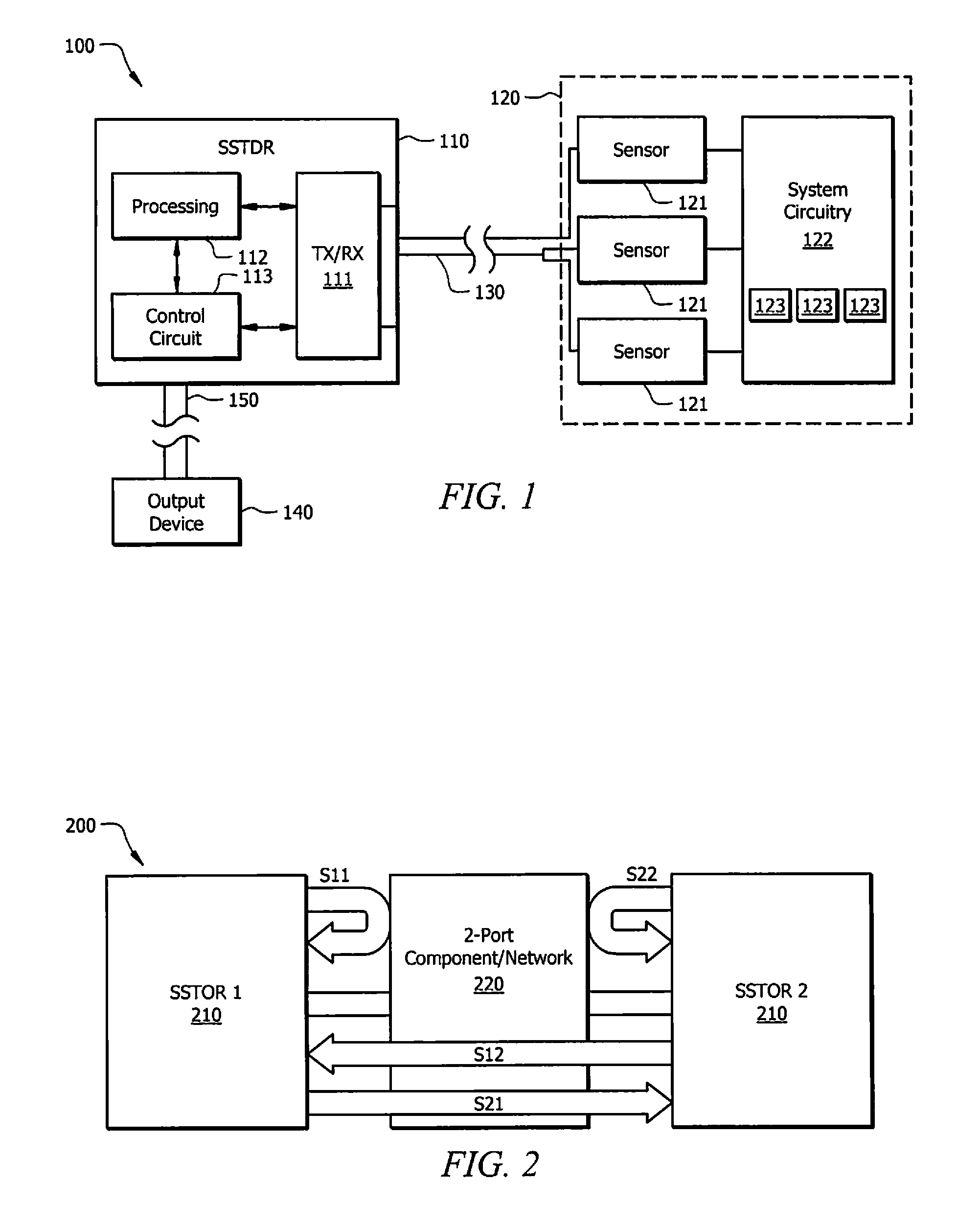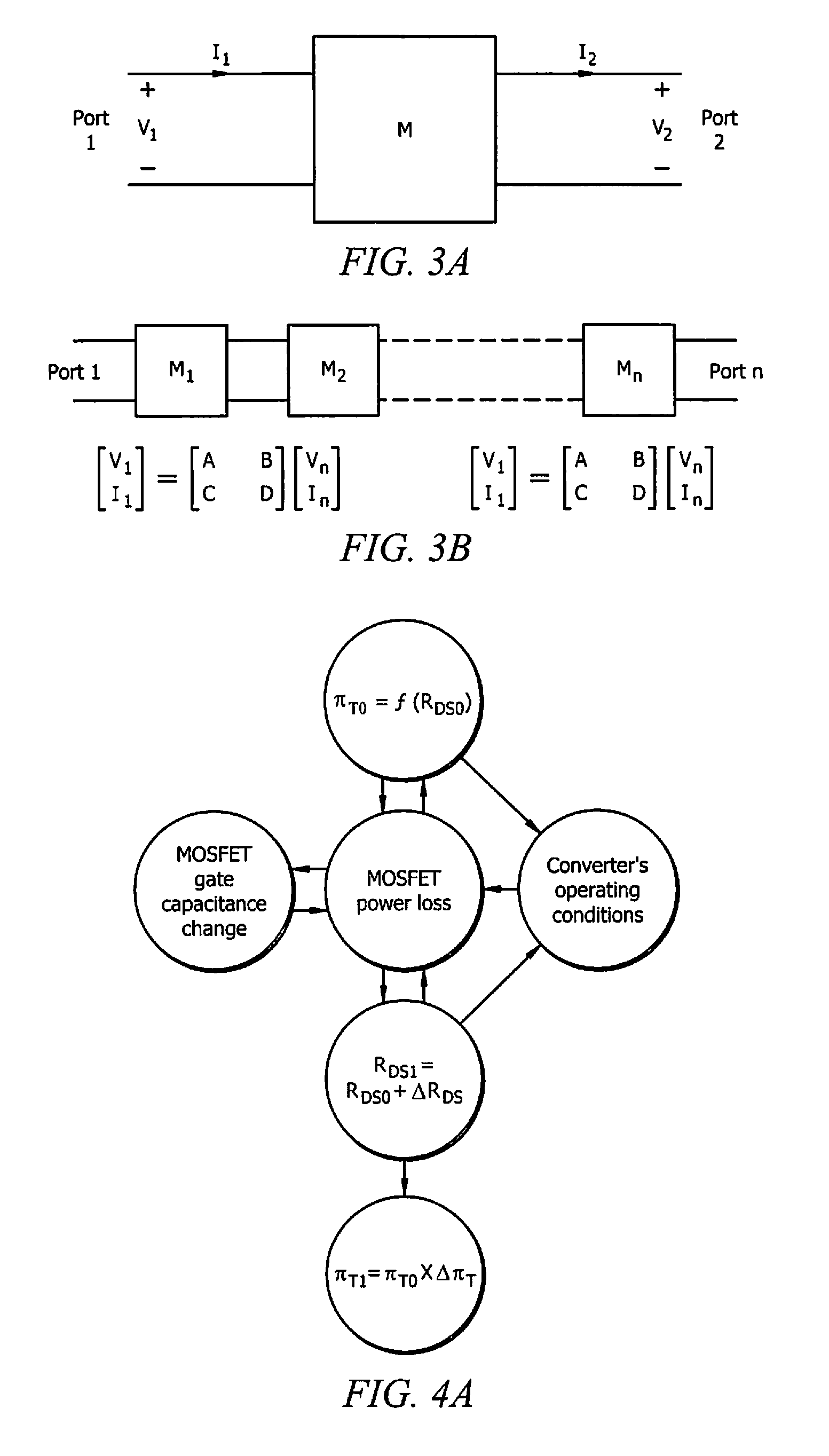Systems and methods for implementing S/SSTDR measurements
a technology of s/sstdr and measurement method, applied in the direction of resisting/reacting/inhibiting, fault location, pulse reflection method, etc., can solve the problem of reducing the overall time necessary for running tests, and achieve the effect of improving s/sstdr measurement resolution and accuracy, reducing overall time necessary, and improving resolution
- Summary
- Abstract
- Description
- Claims
- Application Information
AI Technical Summary
Benefits of technology
Problems solved by technology
Method used
Image
Examples
Embodiment Construction
Applications of S / SSTDR Measurements
[0034]Spread spectrum sensing is different than electrical test systems used today. In general, spread spectrum sensing methods send a coded high frequency electrical signal down a wire, where it reflects off of impedance changes and returns to the original source. The time delay between the incident and reflected signals tells the distance to the fault (its location). The nature of the reflected signal tells what kind of fault it is. For example, the reflected signal is positive for Open Circuit (OC), and negative for short circuit (SC). Previous systems are generally limited or directed toward taking such measurements.
[0035]Embodiments may utilize similar principles to detect other variations that may be reflected in the coded electrical signal. Such variations may correspond to resistance (R), inductance (L), capacitance (C), and impedance (Z). In practice, variations due to resistance reflect the incident signal with a magnitude proportional t...
PUM
 Login to View More
Login to View More Abstract
Description
Claims
Application Information
 Login to View More
Login to View More - R&D
- Intellectual Property
- Life Sciences
- Materials
- Tech Scout
- Unparalleled Data Quality
- Higher Quality Content
- 60% Fewer Hallucinations
Browse by: Latest US Patents, China's latest patents, Technical Efficacy Thesaurus, Application Domain, Technology Topic, Popular Technical Reports.
© 2025 PatSnap. All rights reserved.Legal|Privacy policy|Modern Slavery Act Transparency Statement|Sitemap|About US| Contact US: help@patsnap.com



